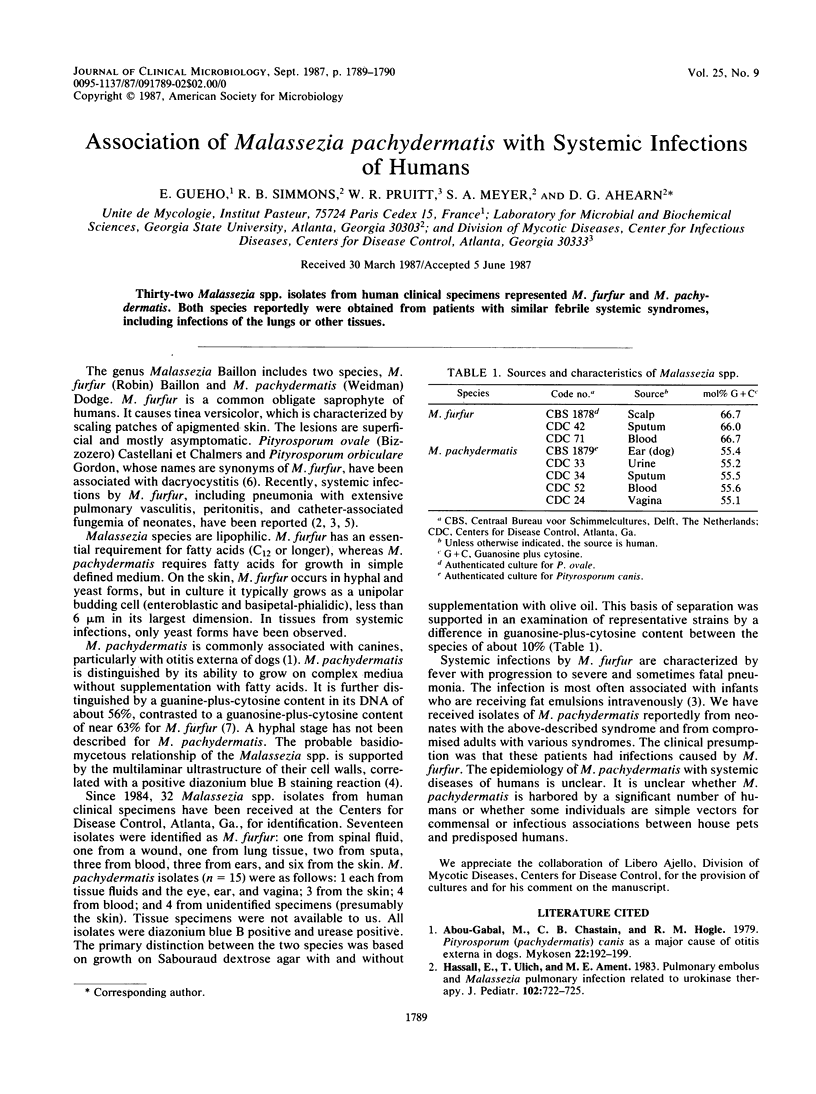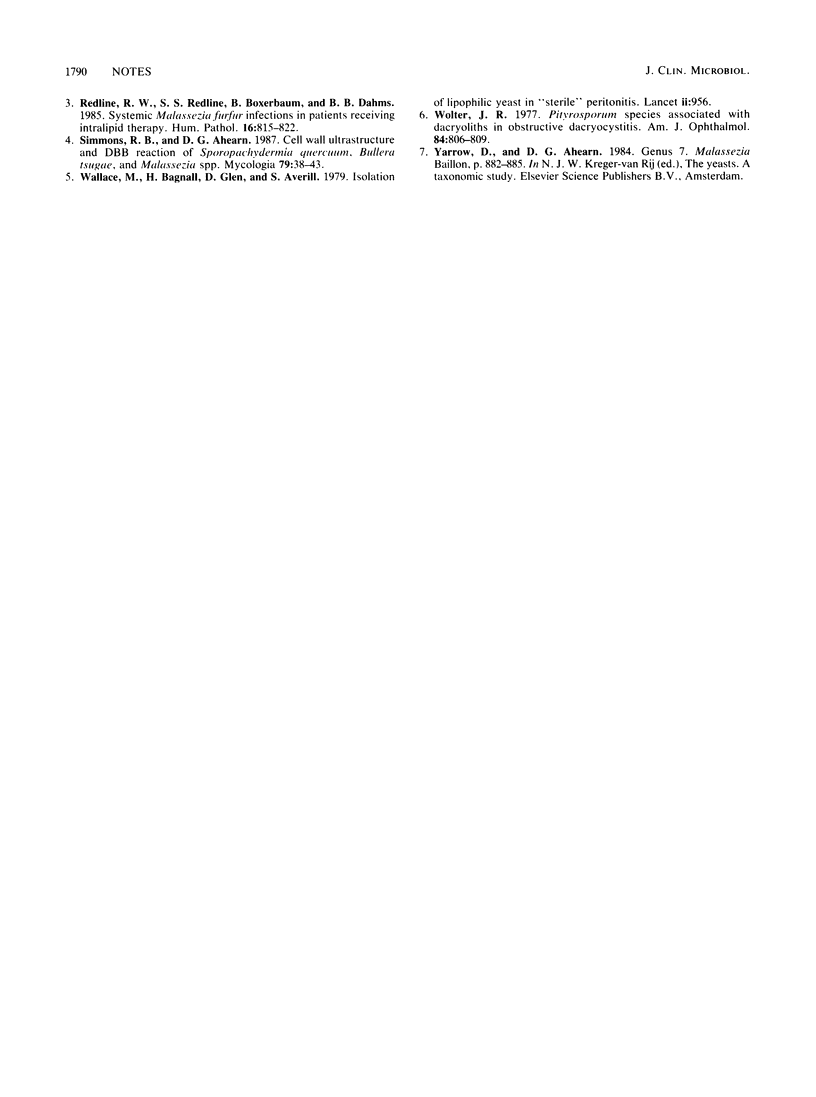Abstract
Thirty-two Malassezia spp. isolates from human clinical specimens represented M. furfur and M. pachydermatis. Both species reportedly were obtained from patients with similar febrile systemic syndromes, including infections of the lungs or other tissues.
Full text
PDF

Selected References
These references are in PubMed. This may not be the complete list of references from this article.
- Abou-Gabal M., Chastain C. B., Hogle R. M. Pityrosporum pachydermatis "canis" as a major cause of otitis externa in dogs. Mykosen. 1979 Jun;22(6):192–199. doi: 10.1111/j.1439-0507.1979.tb01741.x. [DOI] [PubMed] [Google Scholar]
- Hassall E., Ulich T., Ament M. E. Pulmonary embolus and Malassezia pulmonary infection related to urokinase therapy. J Pediatr. 1983 May;102(5):722–725. doi: 10.1016/s0022-3476(83)80244-3. [DOI] [PubMed] [Google Scholar]
- Redline R. W., Redline S. S., Boxerbaum B., Dahms B. B. Systemic Malassezia furfur infections in patients receiving intralipid therapy. Hum Pathol. 1985 Aug;16(8):815–822. doi: 10.1016/s0046-8177(85)80253-7. [DOI] [PubMed] [Google Scholar]
- Wallace M., Bagnall H., Glen D., Averill S. Isolation of lipophilic yeast in "sterile" peritonitis. Lancet. 1979 Nov 3;2(8149):956–956. doi: 10.1016/s0140-6736(79)92647-3. [DOI] [PMC free article] [PubMed] [Google Scholar]
- Wolter J. R. Pityrosporum species associated with dacryoliths in obstructive dacryocystitis. Am J Ophthalmol. 1977 Dec;84(6):806–809. doi: 10.1016/0002-9394(77)90501-3. [DOI] [PubMed] [Google Scholar]


